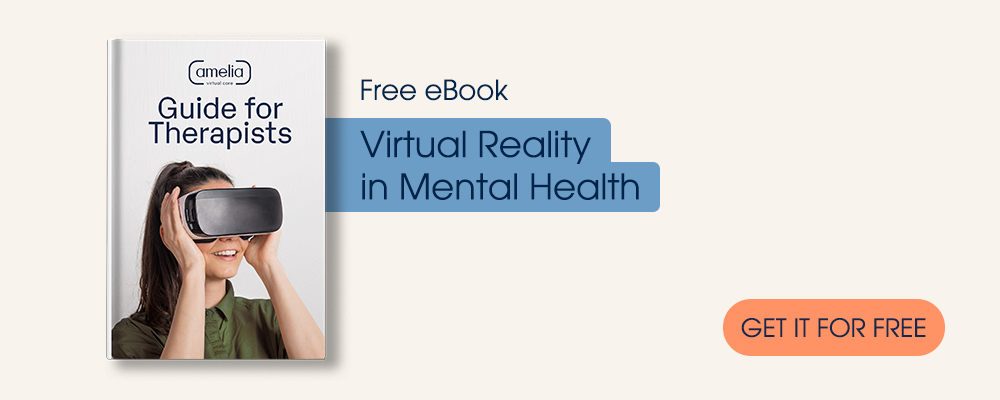Although many people believe it to be exceedingly rare, recent studies indicate that up to 4% of the general adult population will have bipolar disorder at some point in their lives (Kessler, Berglund, Demler, Jin, & Walters, 2005). Even more shocking, the rate may be as high as 6% in younger cohorts. As a result, mental health professionals today have seen an increasing need for more diverse and effective forms of bipolar therapy treatment.
Patients with bipolar disorder and their support systems should be properly educated about the chronic nature of the illness, its common triggers, and the best treatment options to help manage the disease and reduce complications. Although medication was once considered the gold standard in managing bipolar symptoms, promising research and further understanding of the disorder have led many doctors to consider less traditional forms of treatment, including VR support for bipolar disorder.
Signs of Bipolar Disorder
Bipolar disorder is a severe, chronic mental illness that manifests in patients as frequent episodes of extreme mood swings and intensified emotions. Individuals with bipolar disorder may quickly switch from acute feelings of happiness and high energy to extended periods of sadness, fatigue, and irritability. These drastic fluctuations between the highs of mania and the lows of depression are the highlights of bipolar disorder.
There are two major types of bipolar disorder: Bipolar I and Bipolar II. Patients with bipolar I have had at least one manic episode, which may have been very severe and required medical intervention. In contrast, patients with bipolar II have typically experienced a major depressive episode, commonly lasting at least two weeks, along with hypomania, a form of mania that may be mild to moderate and does not typically require hospital care.
An episode of mania is the defining feature of bipolar disorder and distinguishes it from clinical depression. However, hypomania can be deceptive. While it usually presents as anger, irritability, and depression, hypomania may also manifest as an unusual surge of energy, overconfidence, and even enhanced creativity. Consequently, a person experiencing a manic episode may deny that anything is wrong.
There may also be significant variances in degree and duration of a bipolar depressive episode. Depressive symptoms may include lasting sadness, anxiousness, feelings of hopelessness, oversleeping, inability to sleep, changes in appetite, and thoughts of death or suicide.
Causes of Bipolar Disorder
The causes of bipolar disorder vary from person to person. As a result, it may be challenging to determine a single reason for the disease. However, according to the DSM-5, family history seems to be the strongest and most consistent factor for bipolar disorder. Patients who have family members with bipolar disorder have ten times the risk of developing the disease than others. For this reason, it is essential to understand a patient’s family history of mental health to determine whether they may be predisposed to the condition.
Traumatic brain injuries (TBI) may also increase a person’s risk of developing bipolar disorder. TBI patients often experience heightened levels of depression, anxiety, and mood swings. Furthermore, according to a recent Danish study of more than 100,000 people with head injuries, individuals with a TBI are four times more likely to develop a mental illness.
Finally, life events, especially childhood trauma, have long been thought to play a role in triggering bipolar disorder, particularly in those who are already at higher risk of developing the condition.
Treatment for Bipolar Disorder
Because bipolar disorder is a chronic and recurrent condition, long-term treatment is necessary. However, with proper treatment, most people living with bipolar disorder can control their mood swings and lead relatively normal lives.
Mood stabilizer drugs are frequently prescribed to bipolar patients to prevent mood swings and mitigate symptoms. Mood stabilizers, like lithium, help patients avoid the extreme highs and lows of bipolar disorder, while antidepressants are also regularly prescribed to supplement treatment. However, newer medications, like lamotrigine, have shown promising results and fewer side effects.
Nondrug Treatments of Depression
Aside from medication, bipolar therapy treatment is another essential component of treating bipolar disorder. The most common bipolar therapy options include evidence-based therapies, such as cognitive behavioral therapy (CBT), interpersonal therapy, and family-focused therapy, which is particularly helpful for children and teens suffering from bipolar symptoms.
Therapy is beneficial for bipolar disorder because it offers psychoeducation to improve medication compliance and provides patients with the necessary coping skills for their condition. Many mental health specialists agree that CBT is one of the most helpful therapies available, helping change patients’ negative thinking patterns and assisting in dealing with depressive symptoms.
Recent research has shown that emerging technologies have the potential to act as a highly effective delivery format for CBT. Virtual reality (VR), a technology that creates a virtual, computer-generated world, has shown significant promise for CBT and can be used for anti-depressive purposes.
VR interventions built around evidence-based CBT techniques have immense potential to help bipolar patients and impact public mental health overall. VR can create the illusion of an entire virtual environment with a head-mounted display that shuts out the outside world. This virtual setting, coupled with sound effects to strengthen immersion, allows users to experience practical learning and coping scenarios rather than only perceiving them. Best of all, VR integration does not have to be a drastically costly endeavor. Many solutions, including Amelia’s VR kits and platforms, come with varying monthly subscription plans and pricing options to suit any practice’s budget.
If you’re interested in learning more about how VR can help supplement your mental health practice, contact us today to learn more about Amelia’s innovative VR solutions.












